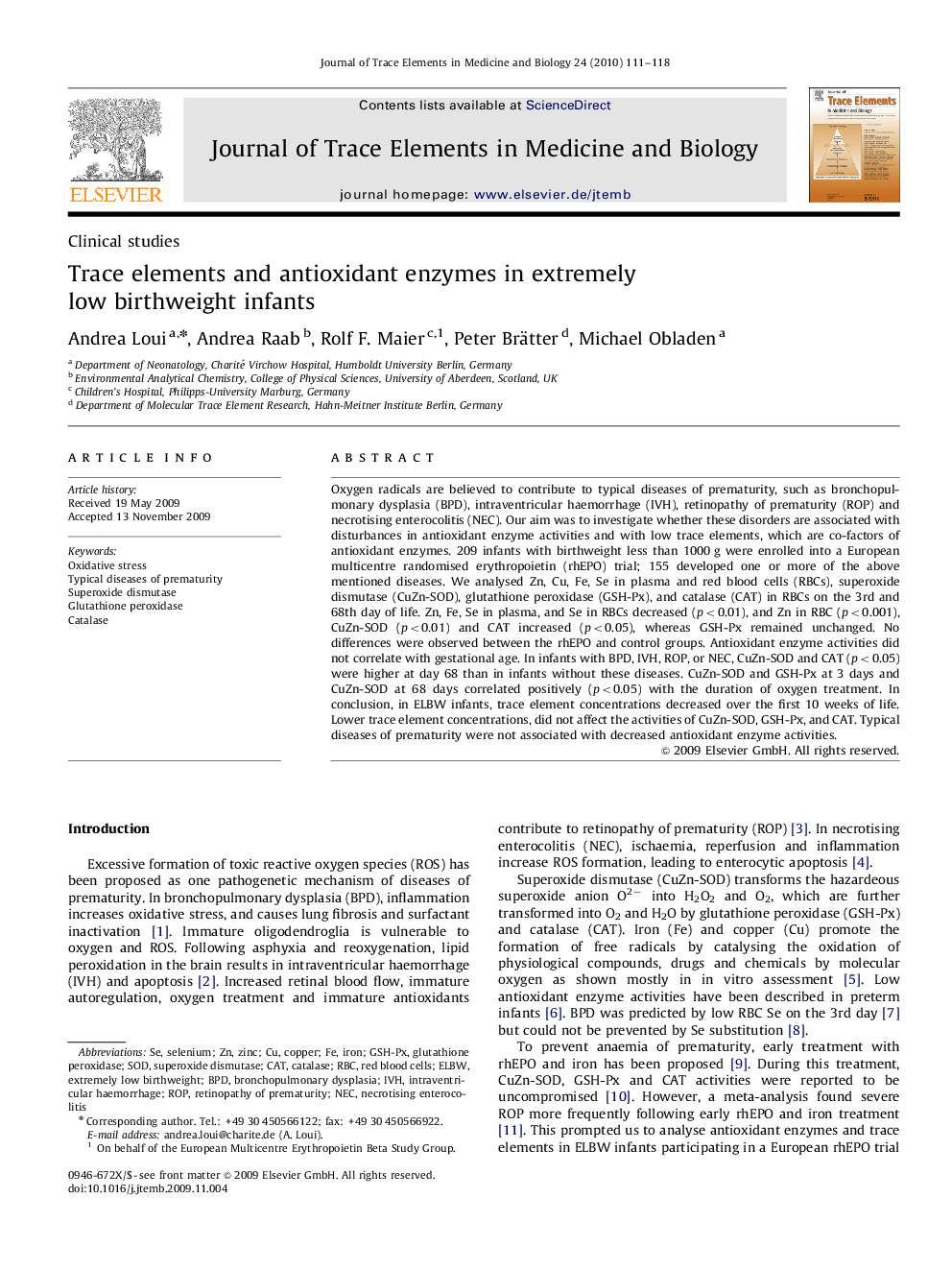| Article ID | Journal | Published Year | Pages | File Type |
|---|---|---|---|---|
| 1227410 | Journal of Trace Elements in Medicine and Biology | 2010 | 8 Pages |
Oxygen radicals are believed to contribute to typical diseases of prematurity, such as bronchopulmonary dysplasia (BPD), intraventricular haemorrhage (IVH), retinopathy of prematurity (ROP) and necrotising enterocolitis (NEC). Our aim was to investigate whether these disorders are associated with disturbances in antioxidant enzyme activities and with low trace elements, which are co-factors of antioxidant enzymes. 209 infants with birthweight less than 1000 g were enrolled into a European multicentre randomised erythropoietin (rhEPO) trial; 155 developed one or more of the above mentioned diseases. We analysed Zn, Cu, Fe, Se in plasma and red blood cells (RBCs), superoxide dismutase (CuZn-SOD), glutathione peroxidase (GSH-Px), and catalase (CAT) in RBCs on the 3rd and 68th day of life. Zn, Fe, Se in plasma, and Se in RBCs decreased (p<0.01), and Zn in RBC (p<0.001), CuZn-SOD (p<0.01) and CAT increased (p<0.05), whereas GSH-Px remained unchanged. No differences were observed between the rhEPO and control groups. Antioxidant enzyme activities did not correlate with gestational age. In infants with BPD, IVH, ROP, or NEC, CuZn-SOD and CAT (p<0.05) were higher at day 68 than in infants without these diseases. CuZn-SOD and GSH-Px at 3 days and CuZn-SOD at 68 days correlated positively (p<0.05) with the duration of oxygen treatment. In conclusion, in ELBW infants, trace element concentrations decreased over the first 10 weeks of life. Lower trace element concentrations, did not affect the activities of CuZn-SOD, GSH-Px, and CAT. Typical diseases of prematurity were not associated with decreased antioxidant enzyme activities.
